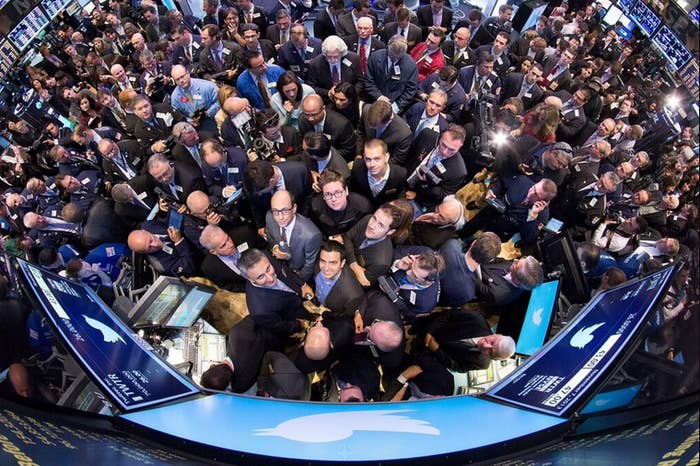
Moments after the opening bell rang this morning, Twitter CEO Dick Costolo joined CNBC on the floor of the New York Stock Exchange for what was, essentially, a 20-minute defense of his now-public company. Before long, the conversation turned to user growth, an area where Twitter has struggled recently, a problem that Costolo blamed at least partially on Twitter's somewhat mystifying sign-up process.
"That language and scaffolding can be confusing and opaque," Costolo explained, emphasizing that Twitter's sign-up process needs to be "clear and simple" to attract new users.
For established and devoted Twitter users — and for most members of the media covering the IPO — signing up for Twitter is a distant memory. (When Twitter's early investors signed up, the service was built around text messages.)
But this, the "onboarding" problem, is something Costolo has brought up again and again. If he's fixated on the need for simplicity in the sign-up process on the day of his company's IPO, it's probably worth considering exactly how easy signing up for Twitter really is, and what a fresh account feels like.
So, we tried it. Here's what starting a Twitter account is like on Nov. 7, 2013, the first day of the rest of Twitter's life.
Here's the first page you see. I gave Twitter access to my history in order to tailor suggestions to sites I've visited.
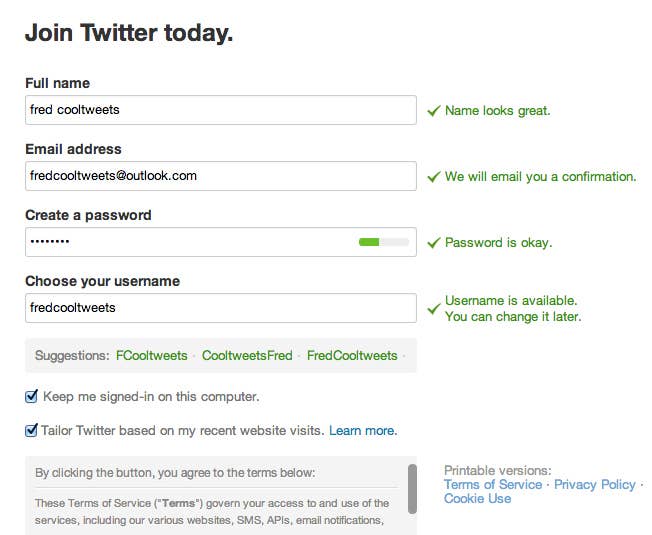
OK. Ready. Under a minute, you say? Easy enough.

First, a tutorial. Twitter is a feed, which people can intuitively understand. But its language and conventions are still very, very weird.
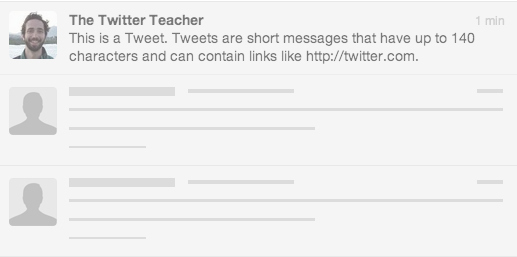
Once my very brief tutorial was finished, it was time to start following some people. Twitter knows better than anyone that the service is only as good as the feed you construct, and right out the gate the network begins hurling suggestions at users.
And unlike other sites like Facebook, Twitter basically forces new users to follow at least 15 accounts. You can, of course, unfollow them at any time, but even now, the idea of "mandatory follows" seems a little peculiar.
The first set of suggested accounts to follow were either massive Twitter celebrities or Twitter company accounts. Overall, very bland selection.
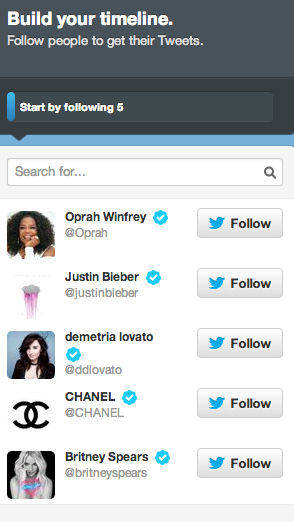
Yawn.

Once you choose five seemingly random popular accounts to follow, Twitter begins to break suggestions out into lists by category.
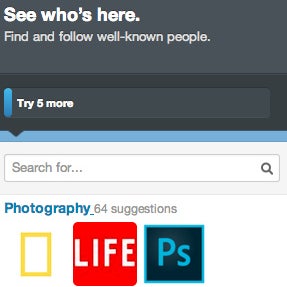


I scrolled through, looking to find some interesting picks, but there was very little to choose from. In categories like tech, news, and music, which comprise a good bit of my feed on my main account, I found very few of the dynamic personal Twitter users that often break news, provide analysis, and share compelling links.
Instead, Twitter gave me celebrities and massive breaking news accounts, which are fine, but lack the personal, aspirational feeling that draws me back to Twitter almost every day.
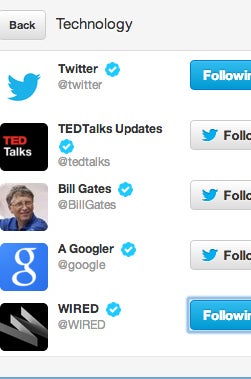
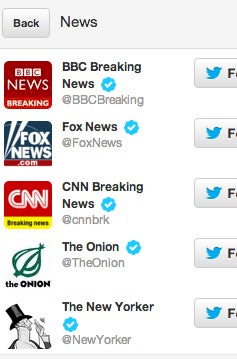
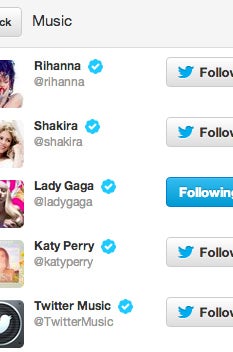
After that, Twitter gets personal, asking to search your contacts for Twitter users. I gave it access to my personal Gmail account in the hopes of finding some people I actually knew.
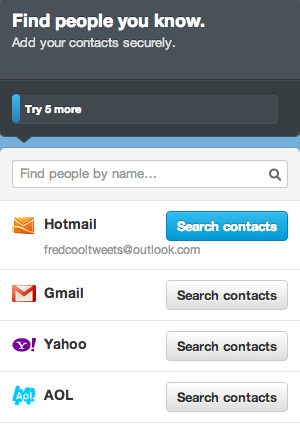
As it turned out, it was pretty disappointing. Outside of work, few of my friends are on Twitter, and those who are aren't nearly as active. Most accounts were protected, so following them didn't add anything to my feed at sign-up.

In fact, it was so bad that I couldn't even find the mandatory five people worthy of a follow. So I chose a random account, just to move things along.

After a quick avatar upload and bio, I was ready to EMBRACE THE FEED.
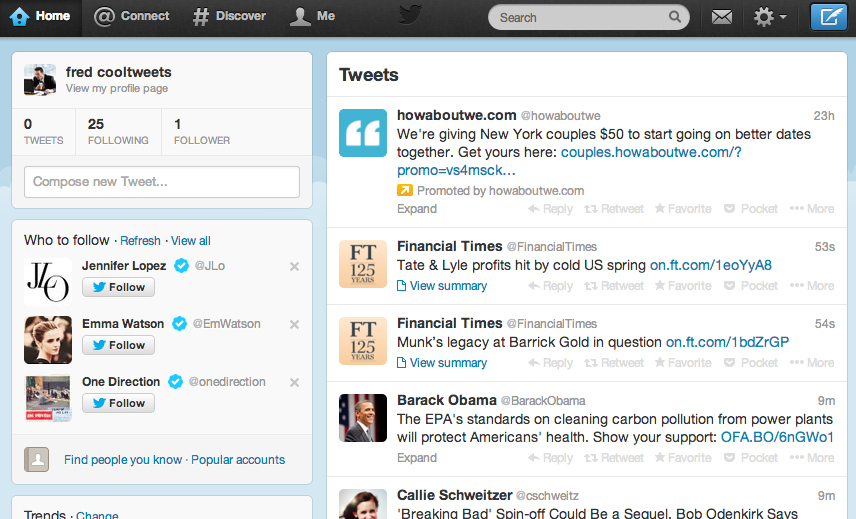
...which turned out to be terribly underwhelming.

And absolutely DOMINATED by a one or two breaking news accounts (50 tweets in a row from FT Breaking News).
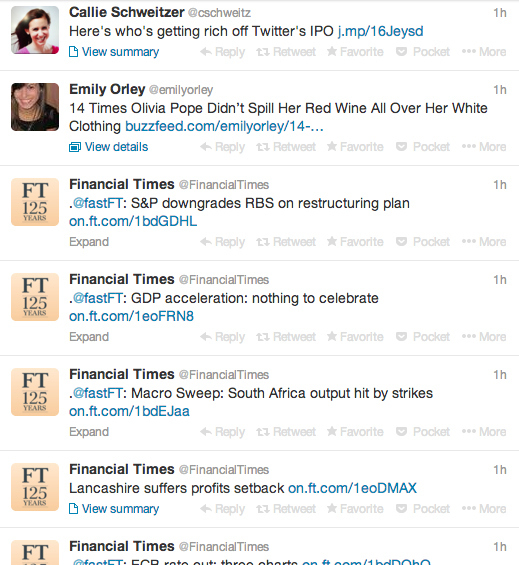
The first thing that struck me was how unrelentingly gross my feed was. I'd tried, albeit rather quickly, to pick some decent suggested accounts based on my interests, but it was almost impossible to create anything meaningful in the span of 10 to 15 minutes, given my options. During my sign-up process Twitter's stock began trading for the first time — a definite breaking news event! — and nothing in my feed gave me any indication of what was going on (though a few straightforward "this is happening" tweets trickled in a few minutes after the fact).
More than anything else, the sign-up process helped me construct a bare-bones timeline that felt extraordinarily impersonal. Granted, nobody can be expected to craft a meaningful feed in minutes — much of what makes Twitter great and so useful is the care that is put into carefully pruning and re-pruning one's network — but Twitter's "onboarding" process seems currently geared toward creating a very superficial, celebrity-focused experience. To get anything more requires a fair amount of effort, which is a lot to ask of users.
Even more disheartening is that I allowed Twitter to access to my web history so it could tailor suggestions based on sites I've visited. I was hoping this would mean I'd get access to some of the journalists and Twitter personalities that I actually read and care about, but it would seem, judging by the network's suggestions, that checking that box meant very little, if anything at all.
Overall, it would appear that Costolo is dead-on about Twitter's sign-up issues. Though he noted much of the "onboarding" work would focus on familiarizing the users with the language and structure of the site, it seems the biggest issue lies in network creation.
This is the conflict at the center of Twitter, a public company that needs to grow to survive: Creating a great feed, and a great network, takes time and effort; creating a bad one takes only a few minutes. How do you convince new users to stick around long enough and to put in the work to make their Twitter accounts good?
